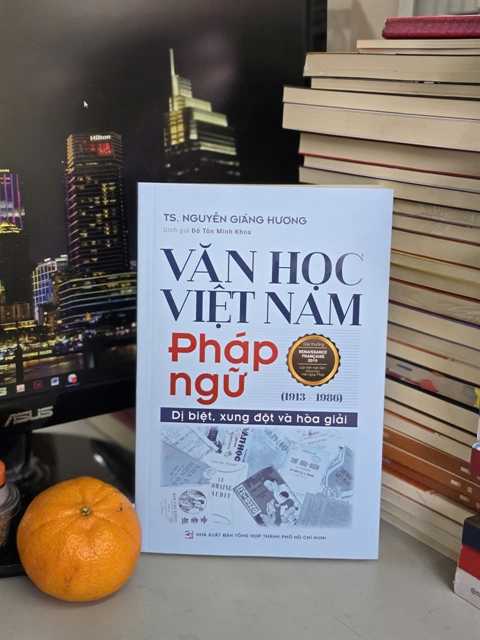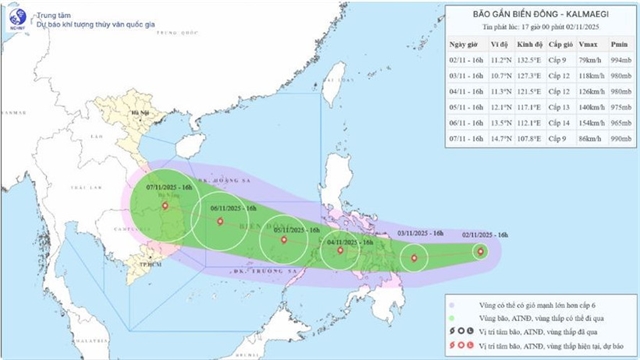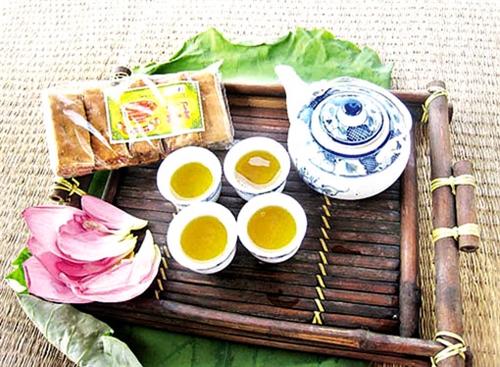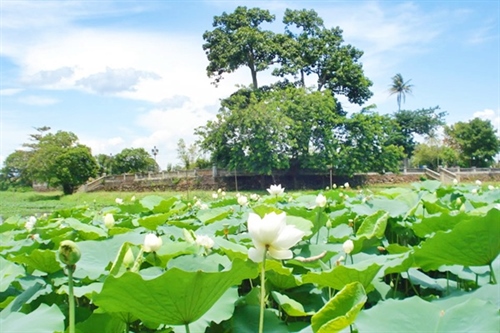 Life & Style
Life & Style

" />Lotus flowers and seeds (hoa sen) have played a vital role in Vietnamese life, cuisine and national identity for centuries. All parts of the lotus flower are utilized to create Vietnamese specialty dishes with specific characteristics and distinctive flavours.
 |
| Lotus tea: Trà sen. Photos by dulichhanoi.com |
Foodwise
Lotus flowers and seeds (hoa sen) have played a vital role in Vietnamese life, cuisine and national identity for centuries. All parts of the lotus flower are utilized to create Vietnamese specialty dishes with specific characteristics and distinctive flavours.
By Hà Nguyễn
Trà sen (lotus tea) and mứt sen (sugar-coated lotus seeds) are two treasured national favourites.
Trà sen (Lotus tea)
Drinking tea is a Vietnamese cultural tradition. There are many varieties of tea enjoyed in Viet Nam.
Trà sen Huế is a Huế specialty. Enjoying this tea is a traditional ceremonial art of the imperial city.
During the Nguyễn Dynasty in the 1800s, imperial maids used to row to Tịnh Tâm Lake to collect each dewdrop on the sen leaves to make tea. The maids served the tea to kings in a different special tea pot for each of the four seasons.
"Lotus tea has its own summer tea pot, for example," says Nguyễn Đắc Xuân, 90, an historian specialising in the history and culture of the Nguyễn Dynasty.
"Sen flowers grow in all of the country’s rural areas. But a sen tea connoisseur prefers tea scented by sen flowers grown in Tịnh Tâm Lake, where the lotus flowers are much more aromatic than lotus flowers from elsewhere," Huế expert cook Tôn Nữ Thị Hà says.
Lotus flowers bloom from early May through June. This is the season when dried tea leaves are traditionally placed in newly opened lotus flowers which are then tied closed to perfume the tea.
"When the lotus flowers opened at midnight, the tea leaves were placed inside the flowers. At 5am these same flowers were then harvested to make tea," Hoàng Anh Sướng, Xuân’s son, says.
Lotus flowers for fragrant tea should be picked before dawn. Cool air and fog help to preserve the light, pure fragrance of sen. After sunrise, sen loses its fragrance due to the heat.
In the past, lotus tea was only served to kings in Huế.
But sen tea was also well known in Hà Nội’s ancient villages around Hồ Tây (West Lake). For example, Quảng Bá, Tây Hồ and Nghi Tàm villages have long been renowned for making lotus-scented tea.
As a result, many Hanoians have known for generations how to enjoy lotus tea in the most sophisticated, precise and stylish way, lotus tea expert Trường Xuân says.
Hồ Tây sen (West Lake lotus tea) is considered the most precious lotus tea because of its beauty and aroma.
These days there are new ways to scent tea. The most popular method utilises lotus anthers to perfume tea at home.
There are also many closely guarded secrets for making tasty lotus-scented tea.
One method involves layering dry tea and dry lotus anthers, then wrapping them in water-resistant paper for three days to preserve the delicate fragrance. This process must be repeated seven times for three weeks to make the most perfect sen tea, says Sướng who learned this art from his father.
 |
| Blooming: White lotus flowers thrive in Tịnh Tâm Lake in Huế. White lotus flowers are the most fragrant blossoms for perfuming tea. |
20th century writer Nguyễn Tuân praised lotus tea for embodying the highest cultural values of the Tràng An (an old name for Hanoi) native people, reflecting the precision, stylishness, elegance and connoisseurship of Hanoian culture.
“Sen tea is the most precious and popular perfumed tea. Sen fragrance embodies the most essential qualities of earth and heaven,” Tuân wrote.
"Lotus plants grow in black mud, but never smell bad. Therefore, lotus represents the most important qualities of sky and earth. This is why lotus roots, leaves and flowers are precious herbs," said Việt Nam’s most renowned herbalist, Hải Thượng Lãn Ông (1720-1791).
Võ Thị Lụa of Hà Nội’s Thanh Xuân District and her husband enjoy lotus tea for its aromatic fragrance, compared to other teas.
“Trà sen is a national heritage which should be preserved,” Lụa says.
Mứt sen trần (Sugar-coated lotus seeds)
The Vietnamese consider Mứt sen trần (Sugar-coated lotus seeds) one of Việt Nam’s greatest gifts to the world.
Tuệ Tĩnh (1330-1400), a renowned herbalist of the Trần Dynasty, called the lotus seed a "son of the lotus plant" because it is a nutritious food which helps cool internal body heat, as well as a medicine to treat sleeplessness without harmful side effects.
These treasured seeds are essential for Tết and wedding parties for Hanoians.
Veteran artisan Nguyễn Vỹ, 87, an owner of Ninh Hương which sells the best mứt sen trần in Hà Nội, says the food originated in Nành Village in Hà Nội’s Gia Lâm District hundreds of years ago.
After a long history of working with herbs, the village now specialises in making traditional food.
 |
| Sugar-coated lotus seeds: Mứt sen trần is a royal and tasty Vietnamese gift to the world. |
Artisan food-making was interrupted by wars in the past and Vỹ sometimes had to do other jobs, such as tailoring, to earn a living.
“But we have tried to preserve our tradition of making mứt sen trần because it is a noble food left to us by our ancestors,” Vỹ says.
Đàm Hồng Lam, 40, of HCM City always remembers to buy several kilograms of mứt sen trần as gifts for his relatives and friends.
“My family members often enjoy mứt sen trần with sen tea during the Tết holidays when we fully enjoy the essence and spirit of the food."
"My father said drinking astringent tea together with sweet, nutty lotus seed during Tết creates harmony and a peaceful,warm quality,” Lam says.-- VNS
In the box
Mứt sen trần (Sugar-coated lotus seeds) can be found at:
Hà Nội:
§ Phúc Thành.
19 Hàng Điếu Street. Phone: 0906160984
§ Ninh Hương
22 Hàng Điếu Street. Phone: (04) 3825 1148
§ Phương Soát
75 Hàng Chiếu Street. Phone: (04) 3828 1169
§ Ô mai Hồng Lam
11 Hàng Đường Street. Phone: (04) 3928 1838
1A Phố Huế Street. Phone: (04) 6278 2511
151 Quang Trung Street. Phone: (04) 6325 0230
§ Ô mai Tiến Thịnh
21 Hàng Đường Street. Phone: (04) 3984 0323
25 Phan Đình Phùng Street. Phone: (04) 6270 0723
HCM City
§ Ô mai Hồng Lam
82-84 Hàm Nghi Street. District 1. Phone: (08) 3914 0177
Trà sen (Lotus tea) is served at:
Hà Nội:
§ Trà sen
169 Nghi Tàm Street. Phone: 0976 775 814251
Trần Cung Street. Phone: 0976 775 814
§ Tâm trà quán
51 Phan Chu Trinh Alley, Phan Chu Trinh Street. Phone: 093 649 95 69
§ Vô ưu trà quán
68E Trần Quang Diệu Street. Phone: 0902 362628
Huế:
§ Trà Đình Vũ Di
Thiên An Eco-Tourism, Cư Chánh village, Hương Thủy town. Phone: (054) 3865703
§ Trà Thất Kim Long
110 Kim Long Street. Phone: (0511) 3692 963
Đà Nẵng:
§ Trà Thất Hoa Sen
156-158 Nguyễn Tri Phương Street, Sơn Trà District. Phone: (0511) 3725 304
HCM City:
§ Khanhcasa Tea House
46 Đồng Khởi Street, District 1. Phone: 01266666605 - 0838251757
66 Lê Lợi Street, District 1. Phone: 01266666605 - 0838251757
77 Hàm Nghi Street, District 1. Phone: 01266666605 - 0838251757
214 Đề Thám Street, District 1. Phone: 01266666605 - 0838251757




